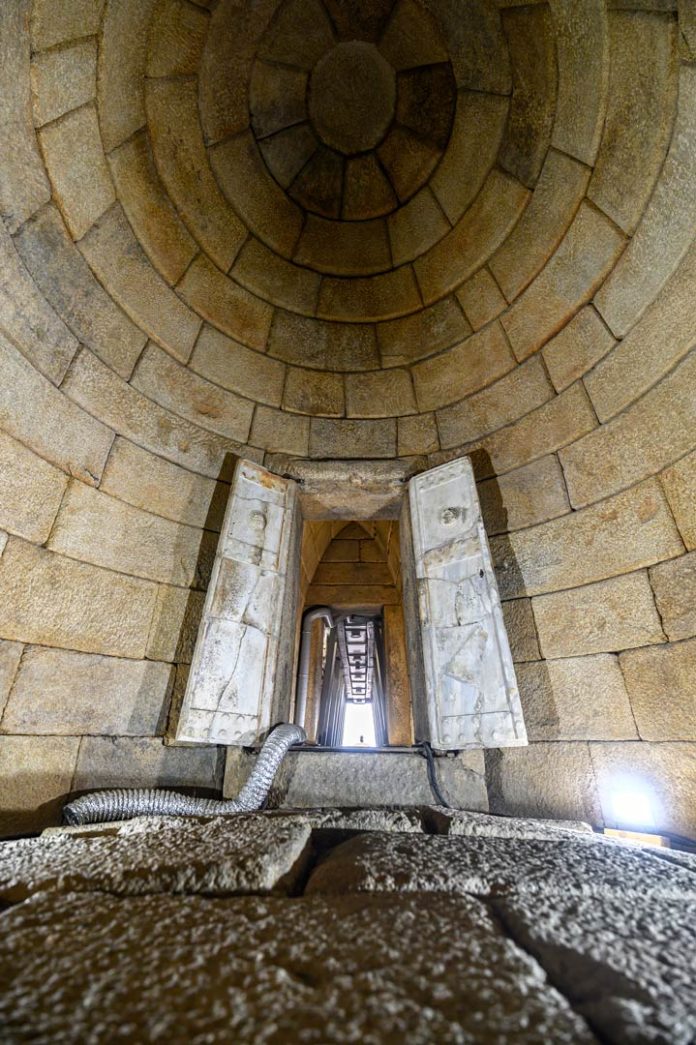A Royal Secret Hidden in the Earth
It’s not every day you stumble upon a king. But in the rolling hills outside the Bulgarian town of Kazanlak, archaeologists did just that. Buried beneath a mound known as Golyama Kosmatka (“The Great Hairy One”), they uncovered what might be one of the most spectacular royal tombs in Europe—the final resting place of King Seuthes III, ruler of the mighty Thracians.
The year was 2004. Archaeologist Dr. Georgi Kitov and his team from the TEMP expedition made a discovery that would change Bulgaria’s historical landscape forever. What began as a routine dig quickly turned into an archaeological sensation.
The Thracians: Mystery and Majesty
Before diving into the tomb, let’s meet the people behind it. The Thracians were a mysterious and powerful civilization that flourished in southeastern Europe for over a millennium. Known for their fierce warriors, lavish goldwork, and deep spiritual rituals, the Thracians were both admired and feared by their neighbors—including the Greeks and Romans.
Seuthes III, who ruled the Odrysian Kingdom around 331–300 BCE, was one of their most prominent kings. He even founded a city—Seuthopolis—whose ruins lie just a few kilometers away (and still sit submerged beneath a reservoir today).
Golyama Kosmatka: Not Just a Tomb, a Story in Stone
At first glance, Golyama Kosmatka looks like any other hill. But step inside, and the mountain becomes a time capsule.
You begin your journey through a 13-meter-long stone corridor, dim and cool, like the passage to another world. This ancient hallway leads to three chambers, each telling a part of the story.
Room One: Ritual and Sacrifice
The first rectangular chamber is believed to have hosted horse sacrifices, an essential part of Thracian burial rites. The ceiling arches like a stone tent—quiet, solemn, and eerie.
Room Two: Royal Ceremony
Next comes the grand circular room, topped with a stunning tholos (dome) ceiling and guarded by a two-winged marble door. The doorway is carved with divine symbols: Helios, the sun god, and Medusa, protector of the soul. Their presence reminds visitors: this is no ordinary grave.
Room Three: The Eternal Chamber
The final room is the heart of the tomb—a 60-ton solid granite block, carved inside to form a chamber. This is where the king lay. And what a send-off he received: a bronze helmet, gilded armor, ceremonial weapons, golden wreaths, and drinking vessels fit for a god.
A Face from the Past: The Bronze Head
One artifact, in particular, stirs the imagination: a lifelike bronze head found buried just outside the tomb entrance. Eyes wide open, beard curling in fine detail, the head seems to breathe with memory. Experts believe it’s a portrait of Seuthes III himself, deliberately placed to “watch” over his lost city of Seuthopolis.
It’s more than art—it’s a message across time.
Why You Should Visit Golyama Kosmatka
Visiting this site is not just for historians or archaeologists—it’s for dreamers. It’s for anyone who’s ever looked at a hill and wondered what lies beneath. You’ll walk where kings were buried, touch walls carved by ancient hands, and see treasures that haven’t seen sunlight in over two millennia.
You can combine your trip with the Thracian Tomb of Kazanlak (a UNESCO World Heritage site), the Iskra History Museum, and a stroll through the Valley of the Roses. But Golyama Kosmatka is the crown jewel—a place that still holds its breath in mystery.
Photo of the Golyamata Kosmatka by mitzo_bs



